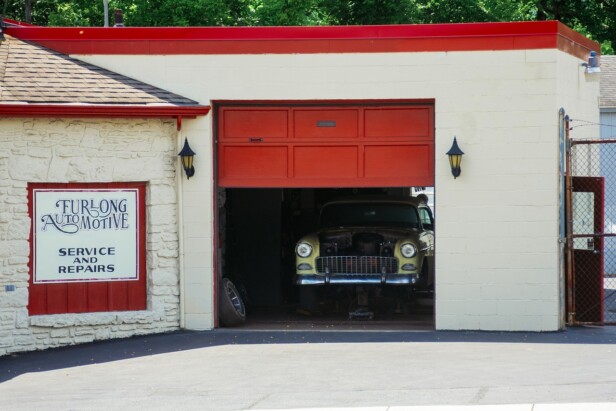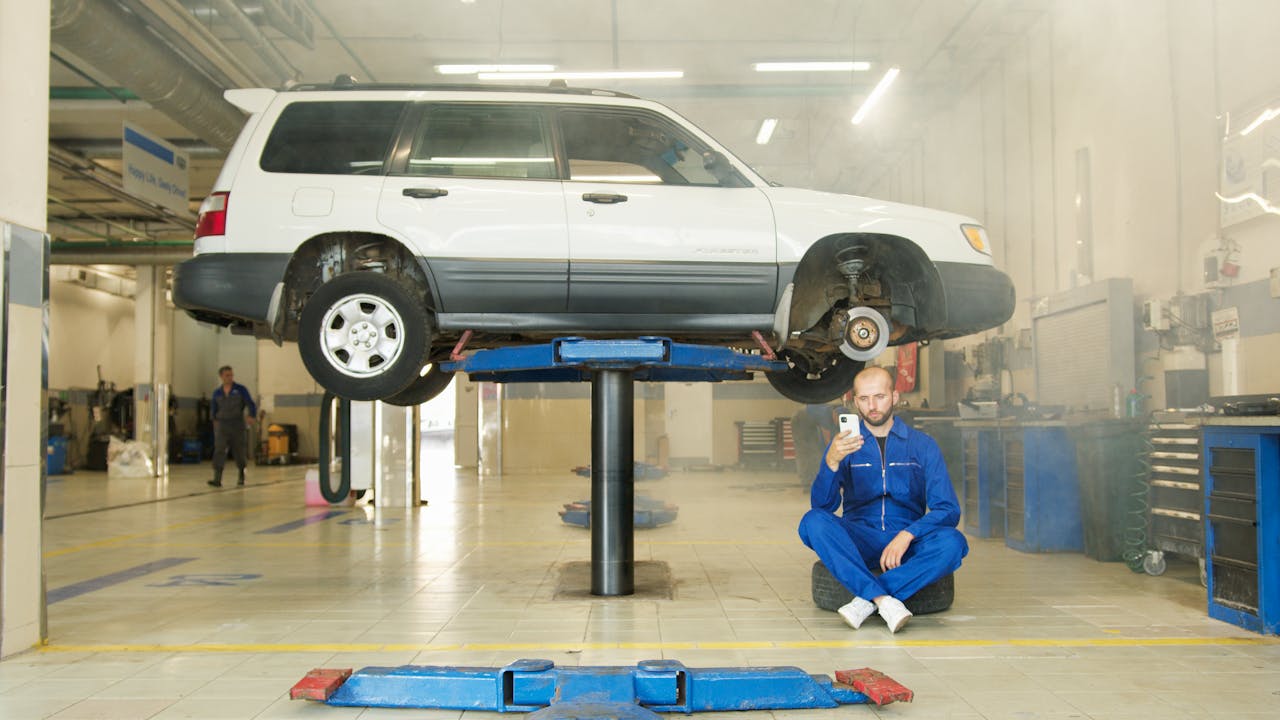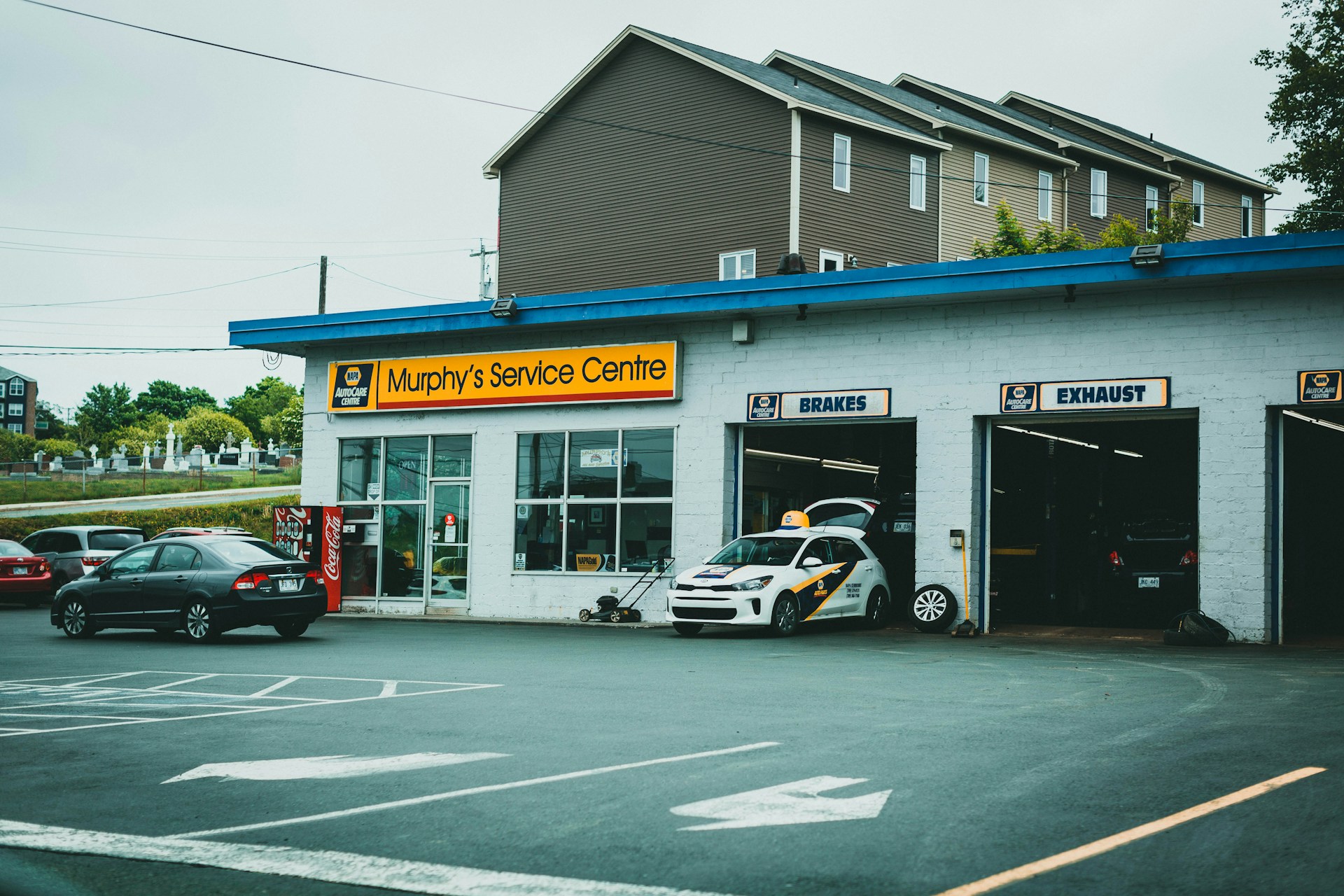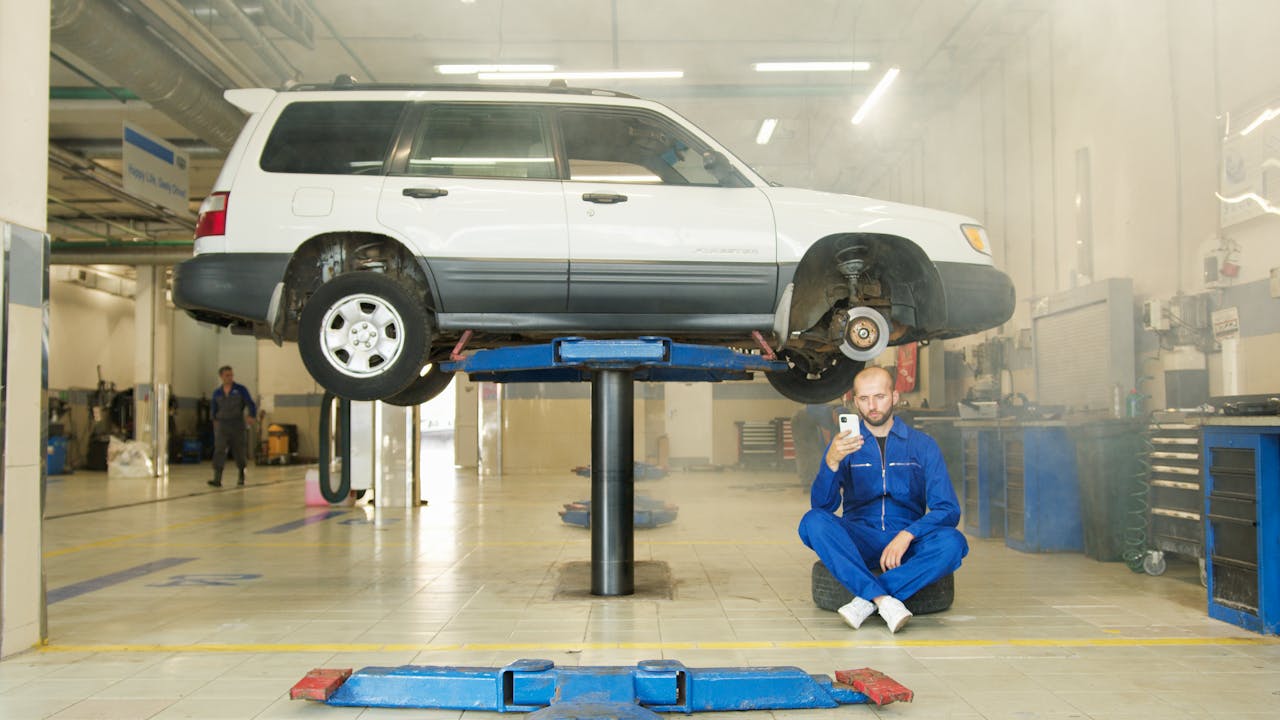Austin’s tire service market demands strategic planning from the ground up. The city processes thousands of commercial building permits annually, and tire shops that align with local regulations move through approval faster than those that miss key requirements.
Tire shop buildout plans Austin must integrate layout design, permit coordination, and equipment specifications within Texas and City of Austin compliance frameworks. Comprehensive plans address work bays, tire storage systems, customer waiting areas, parking accessibility, and operational infrastructure including tools, computers, and point-of-sale systems while coordinating early permit applications and trade contractor registrations to accelerate construction timelines and inspection approvals.
Which Austin Permits And Contractor Registrations Come First?
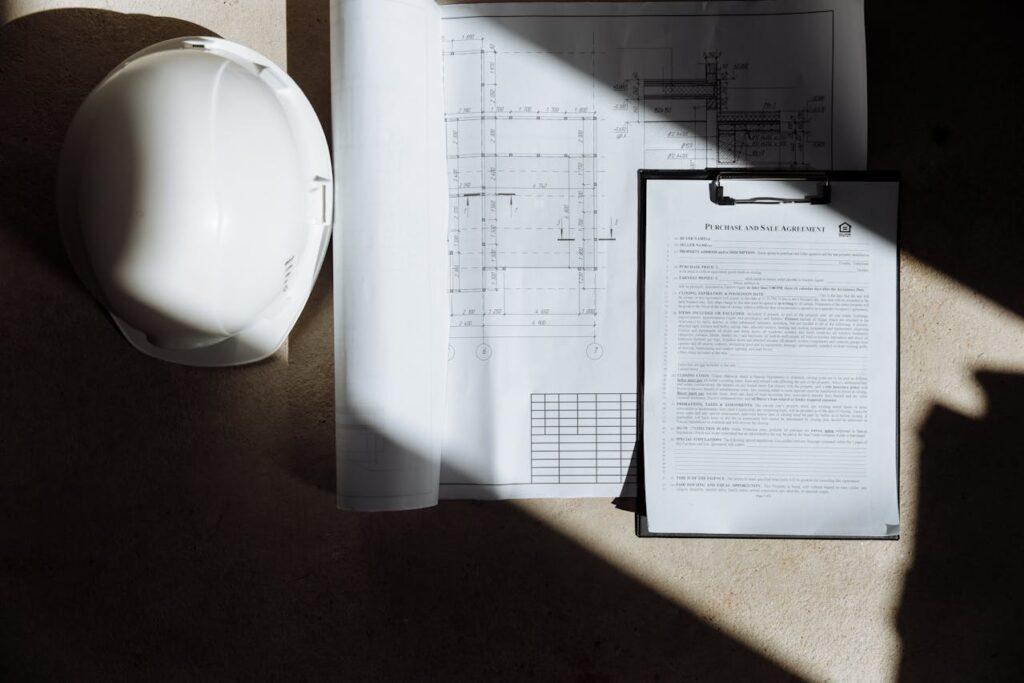
The General Contractor takes the lead by registering with Building and Trade Contractor Services before construction begins. Registration through the City of Austin BTCS system requires creating an Austin Build + Connect Portal account first. This AB+C Portal becomes the central hub for all permit activities throughout the project.
We coordinate contractor registration as the foundation step that unlocks permit activation capabilities. The General Contractor handles building permit activation, fee payments, inspection scheduling, and manages child trade permits under their oversight. They also secure the final Certificate of Occupancy or Certificate of Completion once all inspections pass.
General Contractor Registration Requirements
BTCS requires the General Contractor to complete a one-time registration that remains active unless business information changes. The registration process involves submitting a completed web form along with a Letter of Authorization through the AB+C Portal. Once approved, BTCS provides a contractor PIN number for future permit activations and requests.
After registration completion, the General Contractor can activate building permits that have received approval from Commercial or Residential Plan Review. They can also apply for stand-alone permits when the project scope qualifies for this streamlined approach. The registration gives them authority to pay permit fees, schedule required inspections, and modify existing permits as construction needs evolve.
MEP Trade Contractor Registration Process
Mechanical, Electrical, and Plumbing trade contractors must register separately with BTCS while maintaining their state-level licenses. MEP contractors need current licenses from the appropriate Texas state boards along with City of Austin registration. They must update their city registration annually whenever their state license information changes.
Each MEP trade contractor receives their own contractor PIN after completing registration through the designated web form and Letter of Authorization. This allows them to activate trade permits that have been approved by plan review, pay associated fees, and schedule their specialized inspections. MEP contractors can also modify permits within their trade scope as project conditions require.
The registration sequence ensures proper coordination between the General Contractor and MEP trades. While the General Contractor manages overall project permits and inspections, each MEP contractor maintains responsibility for their specific trade permit activations and compliance requirements.
How Should Site Selection And Layout Be Planned For Austin?
Location selection starts with accessibility fundamentals. We prioritize sites with multiple entry points from arterial roads, allowing customers to approach from different directions without navigating complex intersections. High visibility from main thoroughfares ensures your shop attracts both planned visits and impulse traffic from drivers experiencing tire emergencies.
Proximity to Austin’s commercial districts strengthens customer convenience. Areas near shopping centers, office complexes, or automotive corridors provide natural foot traffic and referral opportunities. We evaluate sites within reasonable distance of complementary businesses like quick lubes, auto parts stores, or general repair facilities where customers already expect automotive services.
Parking Requirements And Vehicle Flow
Customer parking must accommodate both drop-off and pickup scenarios. We design layouts with designated spaces for customers waiting for service, separate areas for vehicles ready for pickup, and employee parking that doesn’t compete for customer spots. A minimum of 15-20 customer spaces supports typical tire shop volumes, with additional overflow capacity during peak seasonal periods.
Vehicle staging areas require strategic placement between parking and service bays. These transition zones allow customers to move vehicles from parking to service positions safely, while providing temporary holding space during busy periods. Clear lane markings and directional signage prevent bottlenecks when multiple customers arrive simultaneously.
Service Bay Configuration
Multiple working bays form the operational core of effective tire shop layouts. We position lift bays with adequate spacing for technician movement and equipment access around each vehicle. Standard two-post lifts require approximately 12-15 feet of width, with additional clearance for toolboxes and pneumatic equipment connections.
Tire storage integrates along perimeter walls to maximize floor space while maintaining inventory accessibility. Vertical tire racks accommodate 300-500 tires in organized configurations, with clear labeling systems for size and type identification. Wall-mounted storage keeps frequently used tools within technician reach while preserving central workspace areas.
Customer Areas And Sales Support
The waiting room requires separation from work areas while maintaining visual connection for service transparency. We design these spaces with comfortable seating for 6-8 customers, adequate lighting, and climate control independent from shop areas. Natural sight lines to service bays allow customers to observe work progress without compromising safety protocols.
Service counter placement creates the primary customer interaction point. We position counters near the entrance for immediate greeting while providing clear views of both parking areas and service bays. This location enables staff to monitor vehicle arrivals, coordinate service scheduling, and maintain customer communication throughout the service process.
Tire displays support sales conversations and customer education. Strategic placement near the waiting area allows customers to examine product options while waiting, with organized presentations of different tire categories, performance ratings, and pricing information. These displays complement the service counter interaction by providing visual reference during tire selection discussions.
What Equipment And Building Systems Must Plans Accommodate?
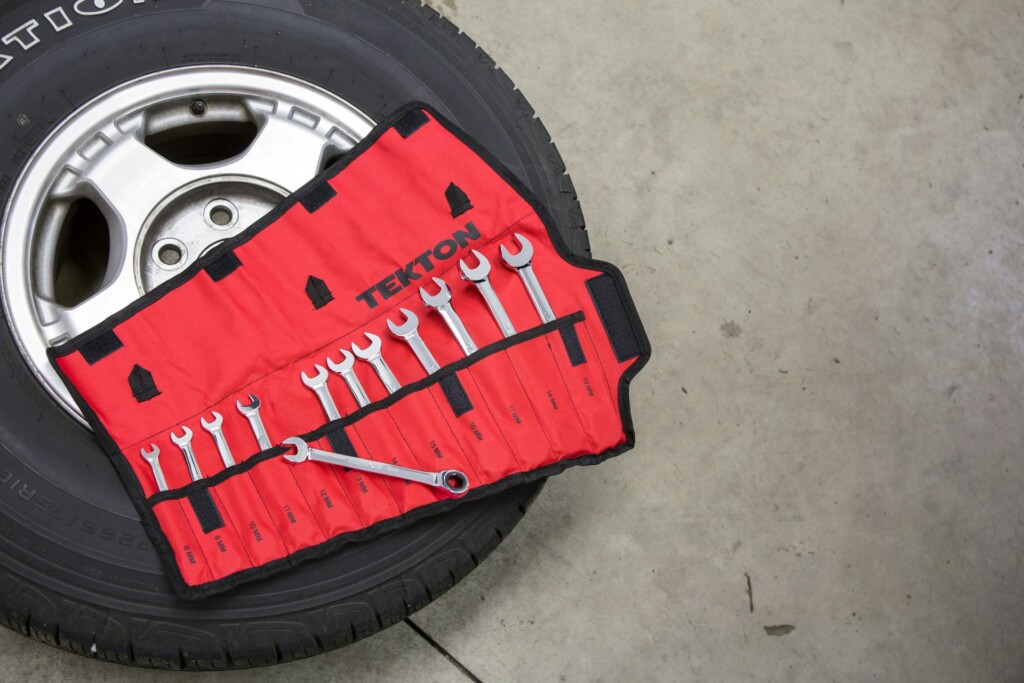
We plan around essential tire service equipment to determine electrical, compressed air, and spatial requirements. Tire changers and wheel balancers form the core of operations, requiring 220-volt electrical connections and positioning near work bays for efficient workflow. Air compressors demand adequate ventilation and should connect to all service areas through properly sized galvanized piping or flexible hoses.
Alignment machines require level floors and additional electrical capacity beyond standard shop loads. We coordinate with electrical contractors early to ensure circuits can handle these power-hungry systems without overloading panels. Space planning must account for equipment footprints plus technician movement around each machine during operation.
Service Equipment Power Requirements
Tire changers typically need 220-volt single-phase power and connect to compressed air systems at 175 PSI minimum. We specify dedicated circuits for each changer to prevent interference with other equipment. Wheel balancers also require 220-volt connections and stable, vibration-resistant mounting to ensure accurate readings during operation.
Air compressors demand the highest electrical loads, often requiring 220-volt three-phase power for units above 7.5 horsepower. We size compressor capacity based on simultaneous equipment use, accounting for tire changers, impact guns, and pneumatic tools. A 60-gallon tank with adequate CFM rating prevents pressure drops during peak operations.
Storage And Tool Organization
Plans must designate tool storage areas along perimeter walls to keep walkways clear. We integrate tire racks for inventory storage, positioning fast-moving sizes closest to service bays while slower inventory can occupy areas farther from work zones. Tool storage includes air-operated ratchets, impact guns, socket sets, and specialized tire repair equipment like plug kits and buffers for patch work.
Floor jacks, hydraulic lifts, and safety equipment require designated storage positions that maintain accessibility without interfering with vehicle movement. We plan storage for consumables like wheel weights, valve stems, and tire mounting compounds in organized systems that support inventory management.
IT Infrastructure And Office Systems
Waiting room and office areas need structured cabling for computers, point-of-sale terminals, and internet connectivity. We coordinate with electrical contractors to provide adequate outlets for workstations, printers, and customer service equipment. Phone systems require multiline capability to handle customer calls and supplier communications simultaneously.
Network infrastructure must support inventory management systems and customer databases. We plan for wireless access points to enable mobile devices and ensure coverage throughout work areas. Electrical plans should include surge protection for sensitive electronics and adequate lighting for computer workstations.
MEP Coordination For Equipment Installation
We coordinate mechanical, electrical, and plumbing scopes around equipment placement to streamline permit activation and inspections. Electrical contractors need equipment specifications early to size panels and plan circuit routing. Compressed air distribution requires coordination between equipment locations and compressor placement to minimize pressure losses.
HVAC systems must account for heat generated by compressors and electrical equipment. We work with mechanical contractors to ensure adequate ventilation in compressor areas and comfortable temperatures in customer waiting areas. Plumbing may be required for air compressor drainage and shop maintenance areas, requiring early coordination with trade contractors to secure proper permits and pass required inspections.
Which Texas Business and Environmental Rules Affect The Buildout?
Texas law requires specific business structures and registrations before we begin construction. The legal foundation starts with selecting a business entity structure and registering it with the Texas Secretary of State. This determines liability protection and tax obligations throughout the construction and operational phases.
We coordinate federal and state tax requirements early in the planning process. An EIN from the IRS enables payroll management and contractor payments during construction. The sales tax permit from the Texas Comptroller handles equipment purchases and future tire sales transactions.
Certificate Of Occupancy Requirements
The city Certificate of Occupancy represents the final approval for business operations. We integrate CO requirements into our construction timeline because this document confirms the completed buildout meets all local codes. Different cities have varying CO processes, so we verify specific requirements with local authorities during early planning phases.
Austin’s building department coordinates the CO with final inspections. We schedule this process to align with contractor completion milestones and avoid delays in opening.
TCEQ Registration for Tire Storage
Storage capacity planning directly impacts environmental compliance requirements. The Texas Commission on Environmental Quality mandates registration for facilities storing more than 500 used and scrap tires on the ground or 2,000 in enclosed containers. We calculate expected tire inventory levels during layout design to determine if TCEQ registration applies to the project.
TCEQ registration involves site-specific documentation and professional engineer approval. We account for this timeline when facilities plan to handle significant tire volumes or offer tire disposal services.
Business Insurance and Risk Management
Insurance coverage protects both construction and operational phases. We coordinate general liability, commercial property, and worker’s compensation policies during planning. These requirements affect contractor selection and site security during buildout.
Commercial property insurance covers equipment and inventory installations. Worker’s compensation requirements influence contractor agreements and safety protocols throughout construction phases.
Service Mix Planning and Compliance
Market research shapes service offerings, which directly impacts buildout requirements. Tire shops focusing on basic mounting and balancing need different bay configurations than facilities offering alignments or suspension work. We analyze local competition and customer demand to define the service mix before finalizing layout plans.
Service decisions affect equipment specifications, power requirements, and space allocation. Shops planning diagnostic services need additional electrical capacity and computer workstation areas. Alignment services require specialized bay configurations and concrete specifications.
Conclusion And Next Steps
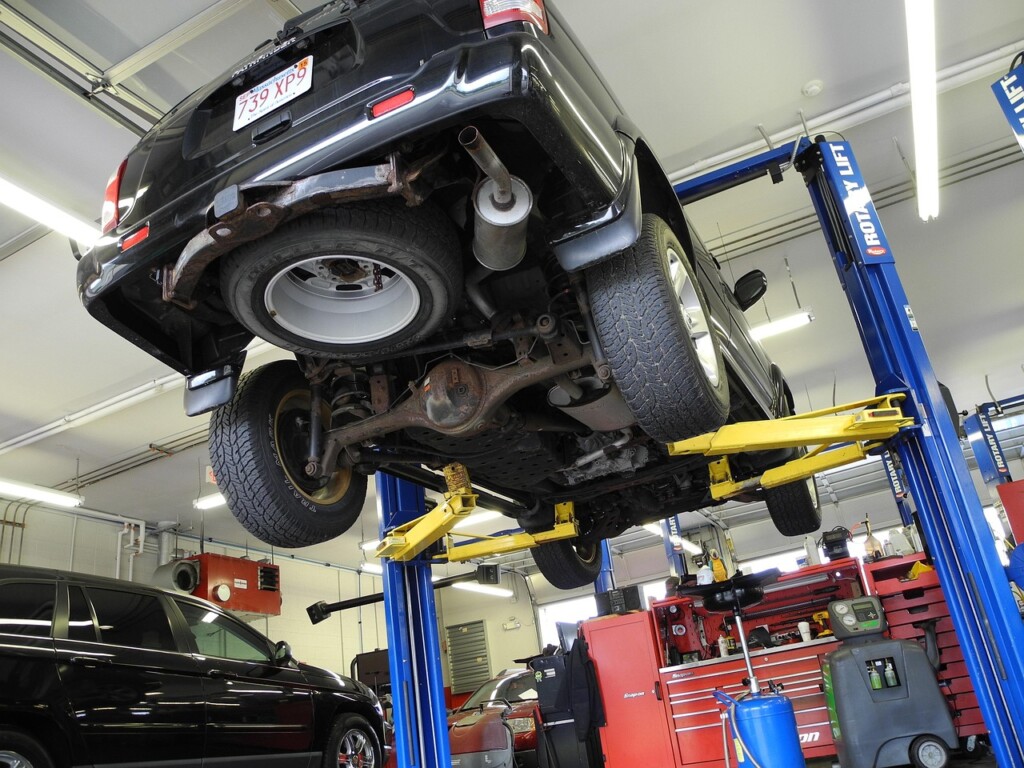
Developing tire shop buildout plans Austin requires careful coordination between permits, contractor registrations, and construction inspections. We approach each project by integrating layout planning with regulatory compliance from the outset. The foundation of success lies in selecting an accessible site with adequate parking, designing multiple work bays for efficient service operations, and creating a comfortable waiting room that supports customer retention and sales opportunities.
The construction sequence follows a clear path that we’ve refined through experience. Complete Texas business filings with the Secretary of State, secure your EIN and sales tax permit, and register with TCEQ if tire storage exceeds 500 units. Register your General Contractor and MEP trade contractors through Austin’s AB+C Portal and Building and Trade Contractor Services. Once registered contractors activate permits, pay associated fees, and schedule the required inspection sequence, the project moves toward the Certificate of Occupancy or Completion that allows business operations to begin.
Ready to move forward with your tire shop construction project? Contact EB3 Construction to discuss how we coordinate permits, contractor registrations, and inspections for Austin commercial buildouts.

